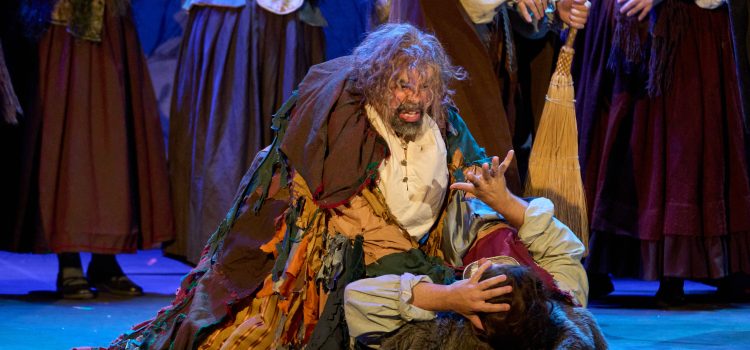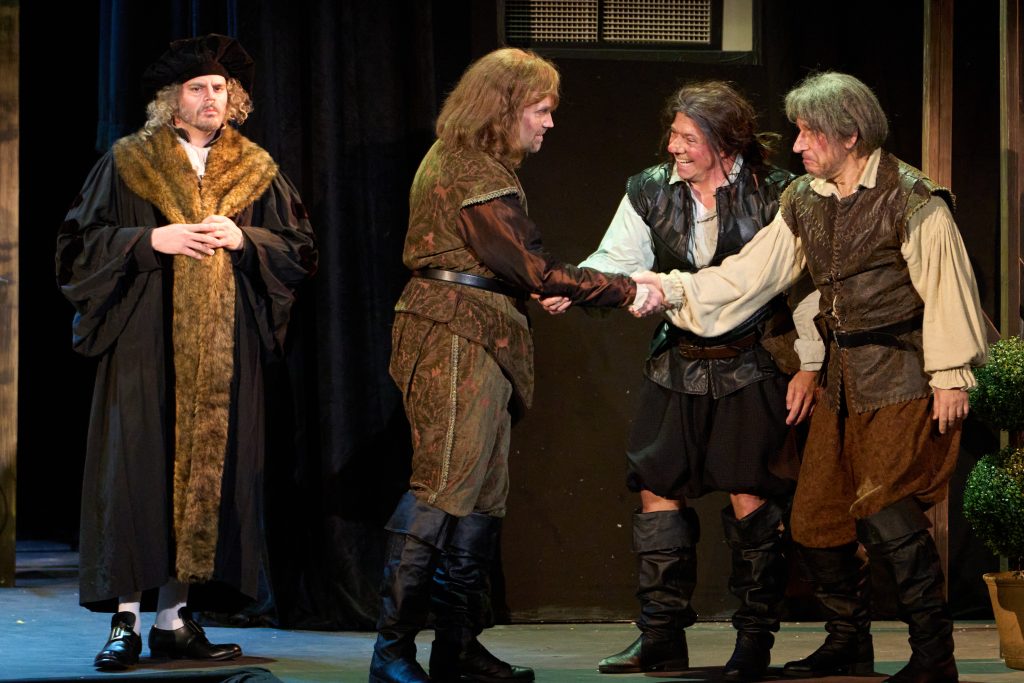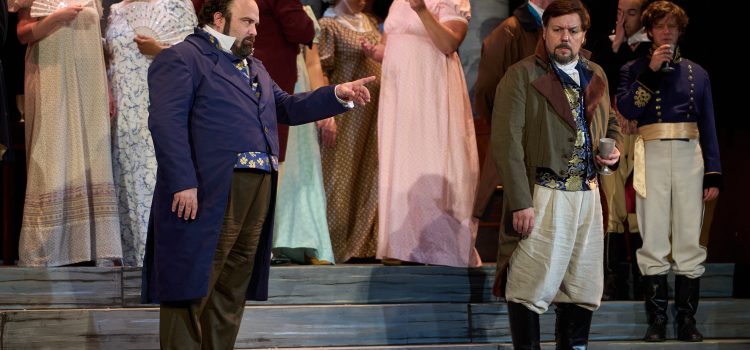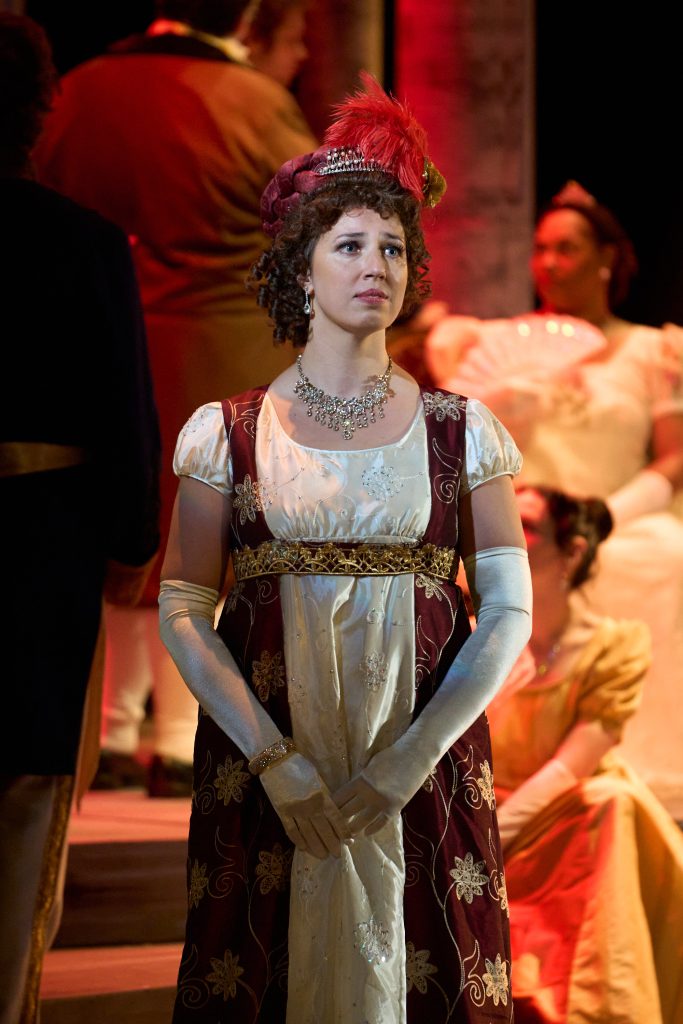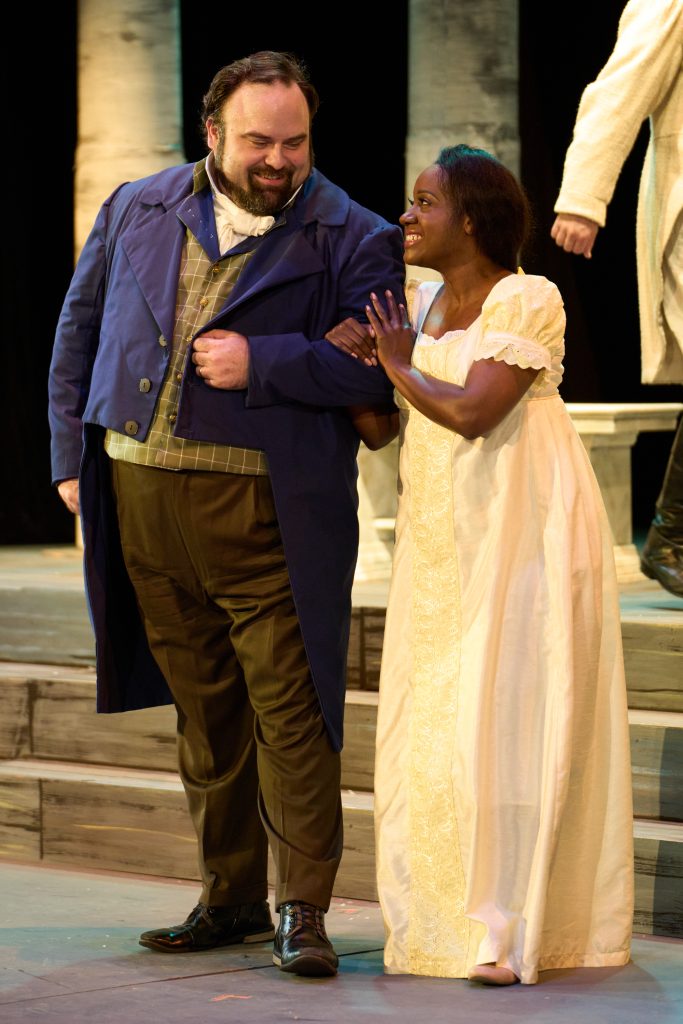By CB Adams
It’s been a bit of a “Sondheim Summer” here in St. Louis, bookended by Far North Theatricals’ “Assassins,” The Muny’s “Sweeney Todd” and Union Avenue Opera’s festival-ending “A Little Night Music,” with performances remaining Aug. 26-27. Extending that bookend will be Stray Dog Theatre’s production of “A Little Night Music” this October.
There seems to be more Sondheim in the air since his death last November, and these local stagings have provided an interesting juxtaposition considering that “Sweeney Todd” is generally considered the more operatic and “Night Music” as more operatta-ish.
No matter. As soon as the off-stage chorus, the Quintet, projected their voices onto the sumptuous Union Avenue Act I set, such nomenclatures were rendered unnecessary…and perhaps irrelevant. Afterall, the first three revivals of “Night Music” in New York were all operatic rather than theatrical, so this production is a good fit for Union Avenue’s strengths and direction.

Isn’t It Bliss?
If there are still tickets left for the final performances of “A Little Night Music,” reserve your seats. That’s the quick review of this production. Don’t miss it. It is indeed bliss.
Hal Prince, producer of this musical’s debut in 1973, called it “whipped cream with knives.” If Prince meant knives as in sharp knives out, then Annamaria Pileggi’s direction has softened it to butter knives out. It’s a pleasure and perhaps a much-needed respite to engage so fully into this nuanced romantic farce based on Ingmar Bergman’s 1955 film “Smiles of a Summer Night.”
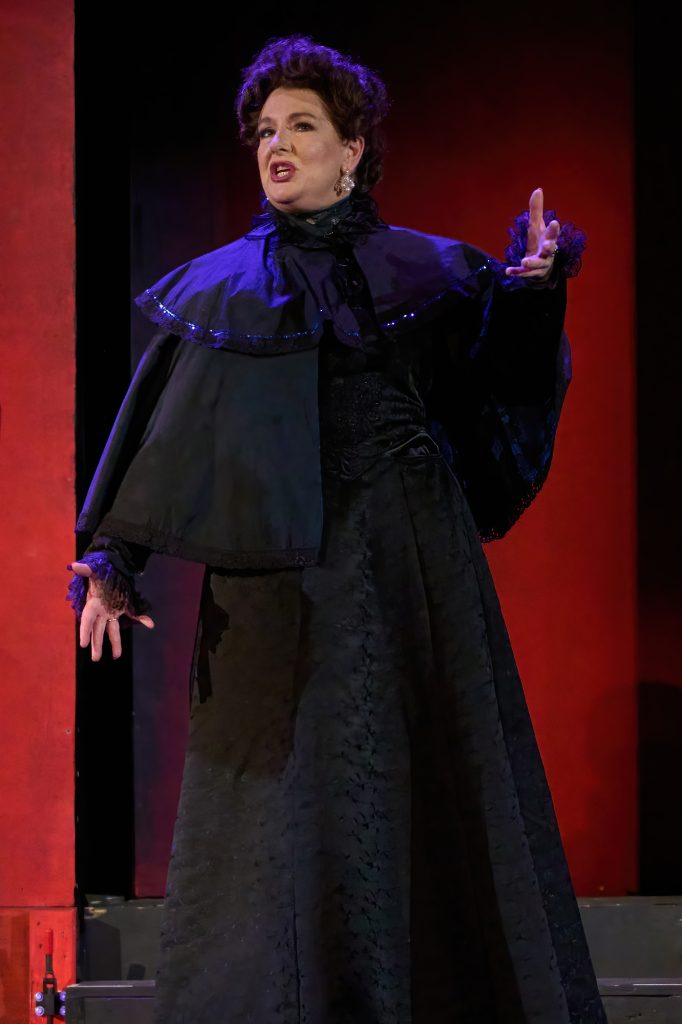
Isn’t It Rich?
Of Union Avenue’s three productions in this year’s festival, the sets of “Night Music” by C. Otis Sweezey are the best, especially in Act I. The back set consisted of three columnar structures that conveyed the frets of a stringed instrument entwined with swan-like figures and backed with the richest of burgundies.
These elements avoid flaunting their presence and instead provide the right sense of place and privilege of the genteel characters.
During the intermission, as Act II’s back set of trees were moved onto the stage, their colors seemed out of place for the “Weekend In the Country,” presaged by that song at the end of Act I.
But those colors were transformed by the lighting choices of Patrick Huber. Thanks to lighting, fluorescent outlines became comfortable, dusky accents for the rest of the musical.

Are We A Pair?
At the risk of being unfair to a overall strong cast from the leads to the Quintet, the center of this rueful, bittersweet, Ibsenish tale from Sondheim and playwright Hugh Wheeler is the pair of Fredrik Egerman, sung powerfully by Peter Kendall Clark and Desirée Armfeldt, sung by Debby Lennon. There are multiple, circuitous story lines, but they all dodge and weave around and toward the ultimate (re)union of Fredrik and Desirée.
And at the center of their relationship is (a now-standard) “Send in the Clowns.” As a hit song by Judy Collins back in the day and as rendered into near-Muzak ubiquity, “Send in the Clowns” needs the context of the surrounding story in the musical itself to reach its fullest, layered, exquisitely painful sense of yearning. It also needs the skills and talents of Lennon to ensure it is the show-stopper it was composed to be. Lennon gave the song its due – and more. You couldn’t hear a pin drop during her performance – to use a cliché.
The other extra-noteworthy “pair” in Union Avenue’s production was Count Carl-Magnus Malcolm and grande dame Madame Armfeldt. Both are broad characters that require a careful interpretation to avoid becoming cartoonish foils. Teresa Doggett performed the wheelchair-bound Madame with a delicious – and sometimes hilarious – imperiousness that evolves into a touching sagacity. As sung by Eric J. McConnell, the peacocky Count Carl-Magus fared less well and often crossed into buffoonery.

But Where Are the Clowns?
To borrow a line attributed to the showman’s showman P. T. Barnum, Union Avenue’s choice of “Night Music” to conclude their 2022 festival, was the perfect choice to “always leave ‘em wanting more.” Given the rich experience provided by this production, “Night Music” will leave us wanting more…well, maybe next year? The only clowns therefore are those who didn’t reserve a ticket this year.
Union Avenue Opera Union presents “A Little Night Music” August 19, 20, 26, 27 at 8 p.m. at Union Avenue Christian Church. For more information, visit www.unionavenueopera.org



CB Adams is an award-winning fiction writer and photographer based in the Greater St. Louis area. A former music/arts editor and feature writer for the St. Louis Globe-Democrat, his non-fiction has been published in local, regional and national publications. His literary short stories have been published in more than a dozen literary journals and his fine art photography has been exhibited in more than 40 galley shows nationwide. Adams is the recipient of the Missouri Arts Council’s highest writing awards: the Writers’ Biennial and Missouri Writing!. The Riverfront Times named him, “St. Louis’ Most Under-Appreciated Writer” in 1996.


